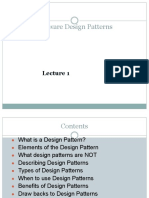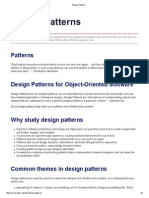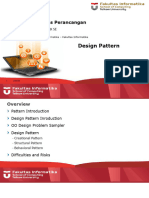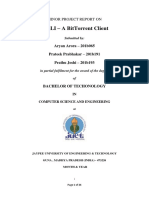0% found this document useful (0 votes)
49 views21 pagesDesign Principles and Patterns
The document outlines key design principles and patterns essential for effective software design, emphasizing the importance of the SOLID principles for maintainability and scalability. It categorizes design patterns into creational, structural, and behavioral types, providing examples and benefits of each. The strategic application of these principles and patterns enhances code quality, team collaboration, and overall software development outcomes.
Uploaded by
parthbalsure18Copyright
© © All Rights Reserved
We take content rights seriously. If you suspect this is your content, claim it here.
Available Formats
Download as PPTX, PDF, TXT or read online on Scribd
0% found this document useful (0 votes)
49 views21 pagesDesign Principles and Patterns
The document outlines key design principles and patterns essential for effective software design, emphasizing the importance of the SOLID principles for maintainability and scalability. It categorizes design patterns into creational, structural, and behavioral types, providing examples and benefits of each. The strategic application of these principles and patterns enhances code quality, team collaboration, and overall software development outcomes.
Uploaded by
parthbalsure18Copyright
© © All Rights Reserved
We take content rights seriously. If you suspect this is your content, claim it here.
Available Formats
Download as PPTX, PDF, TXT or read online on Scribd
/ 21






















































































